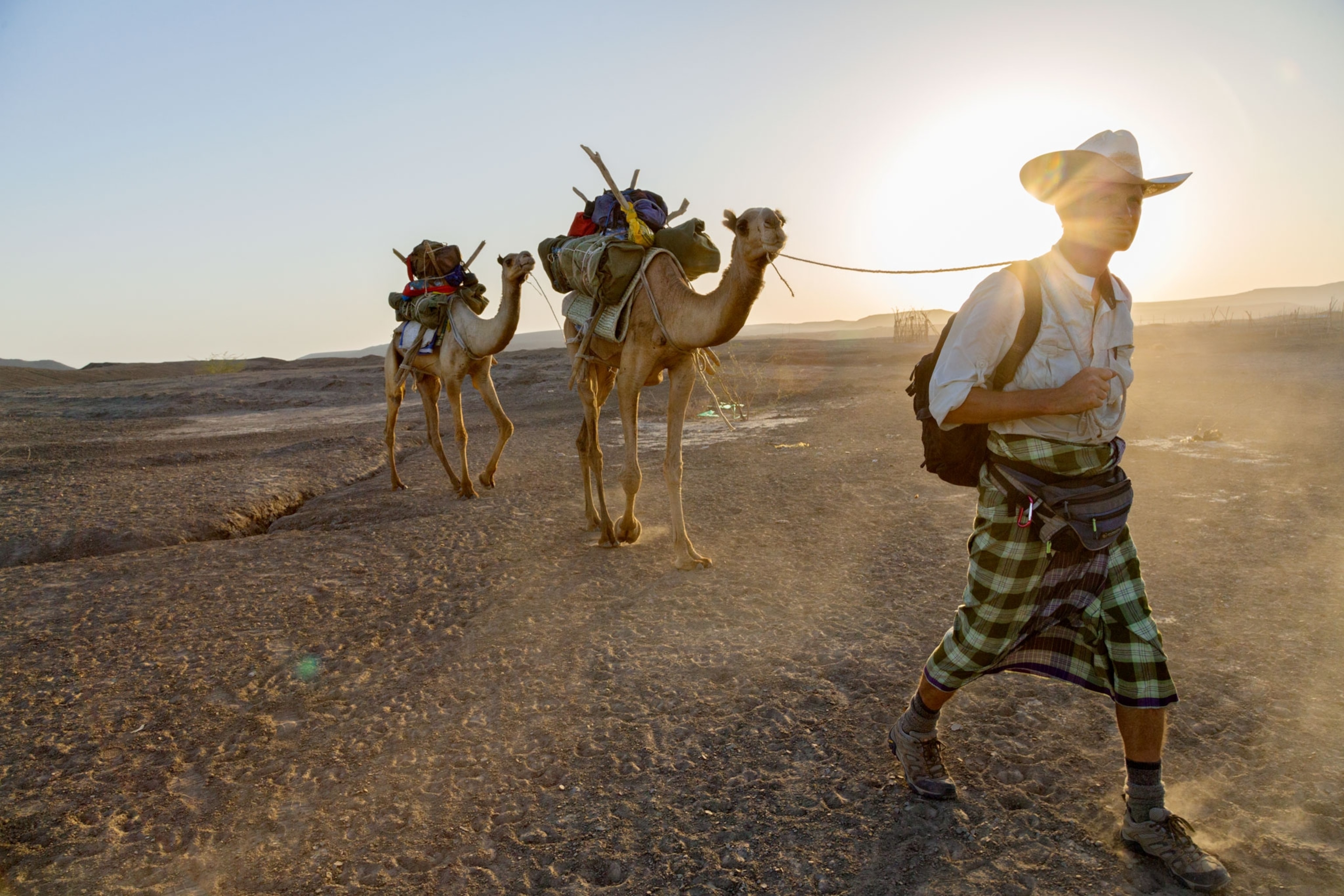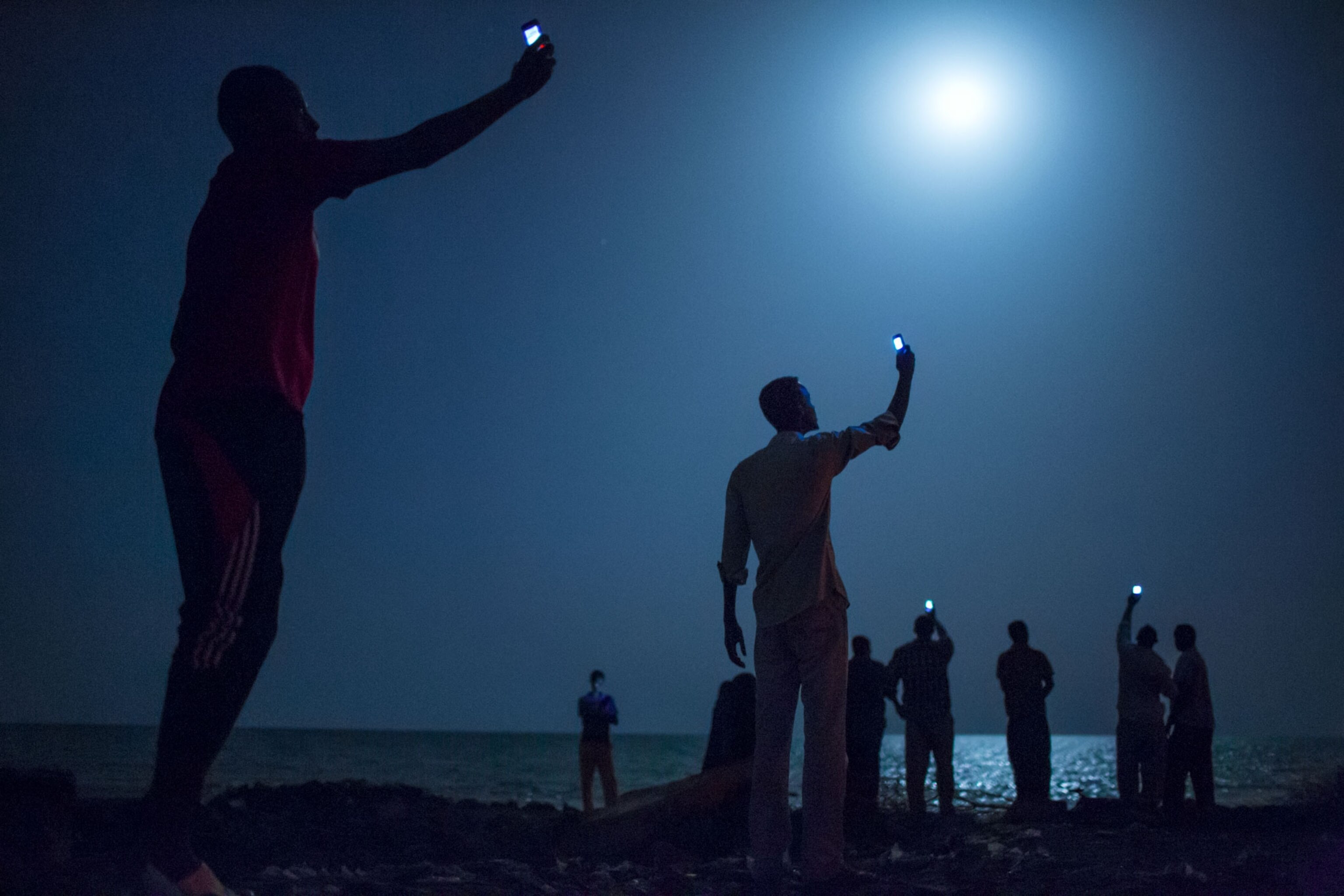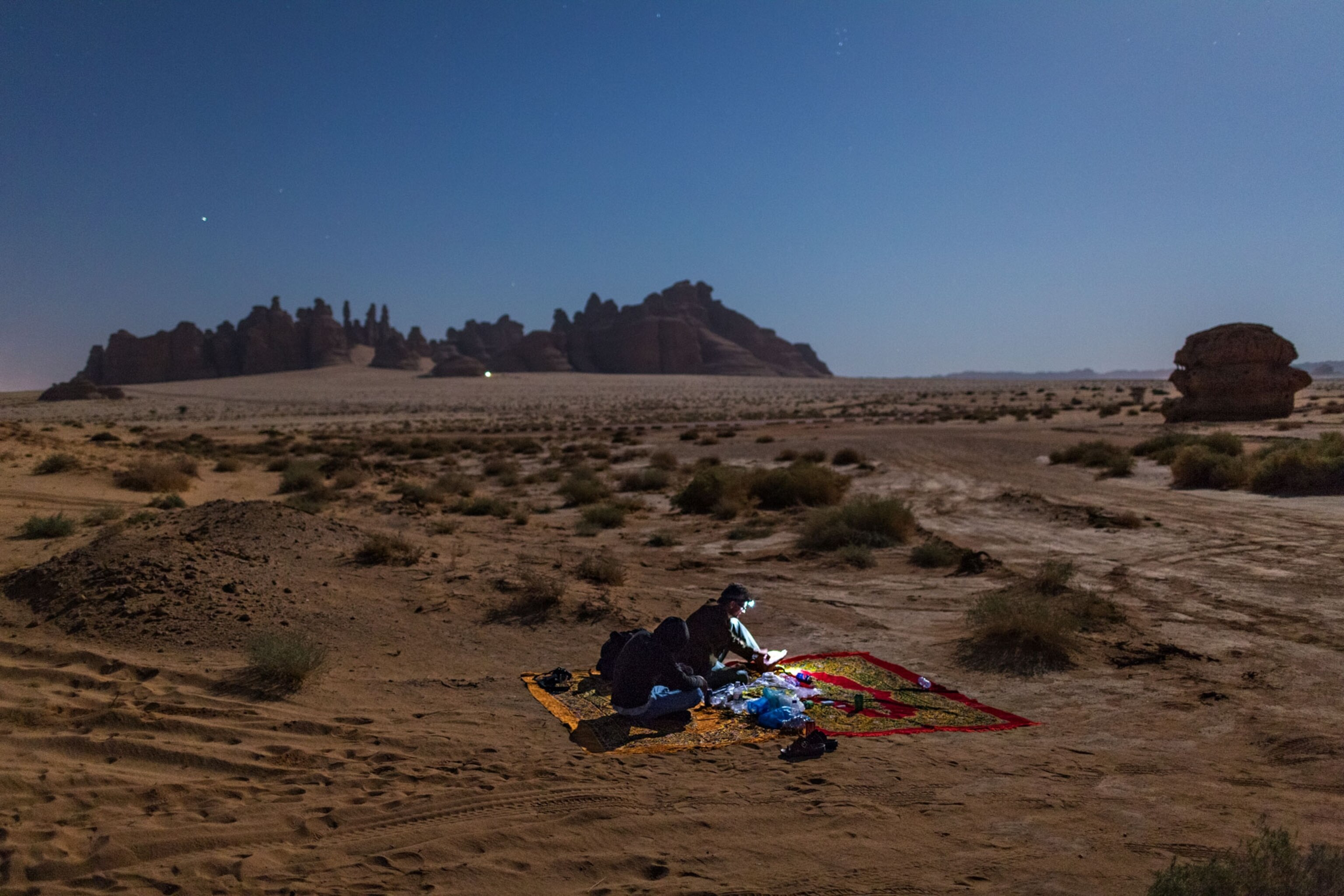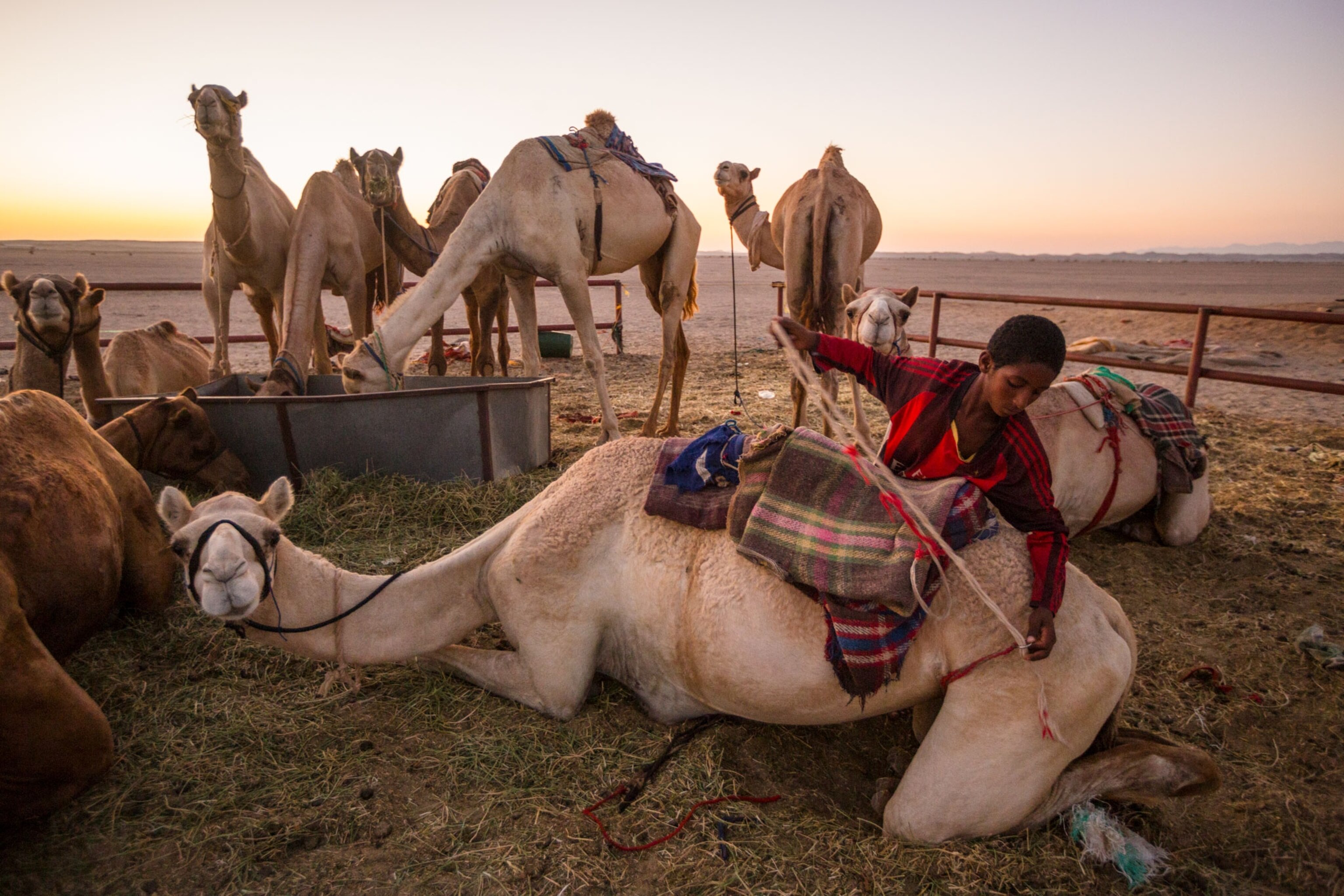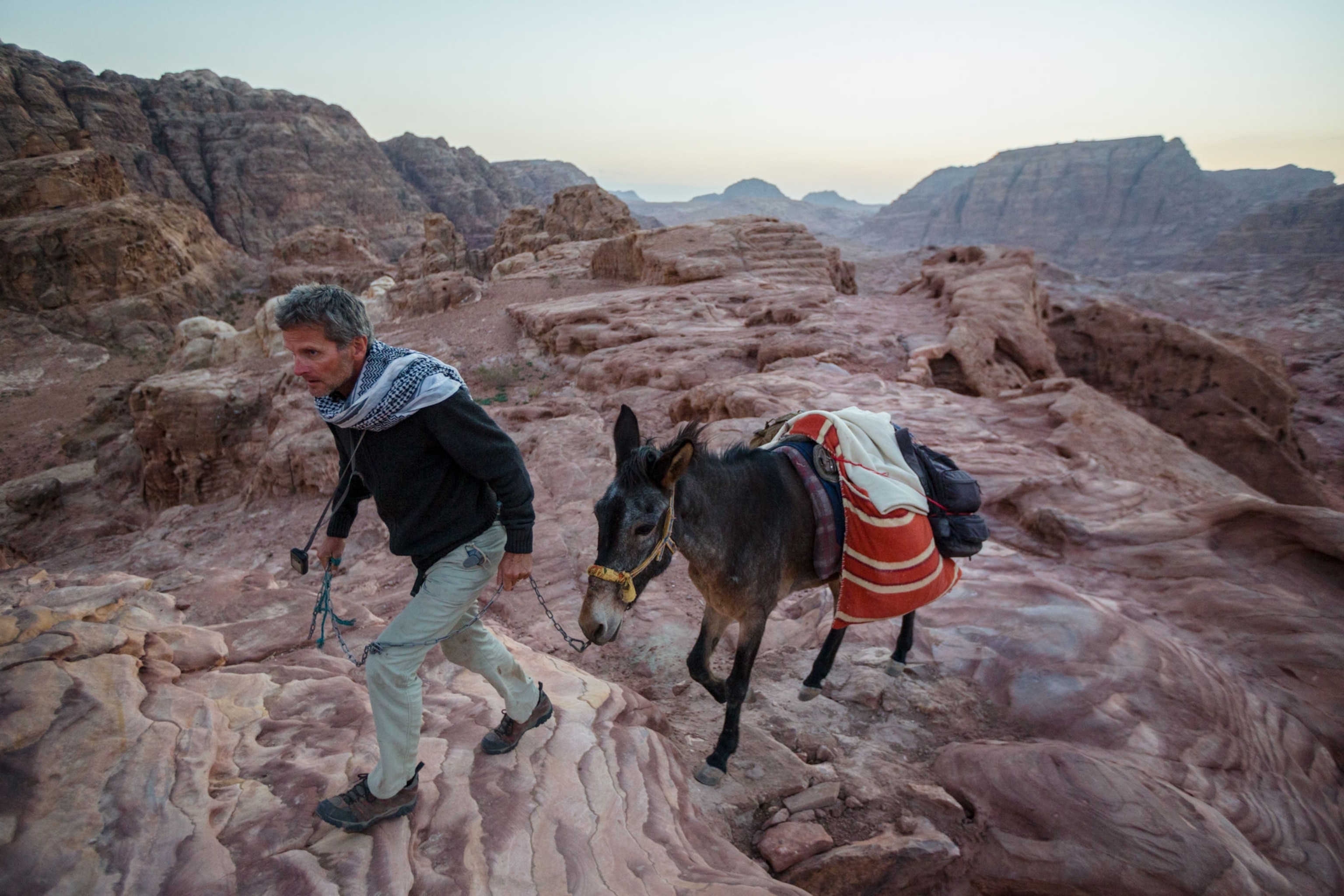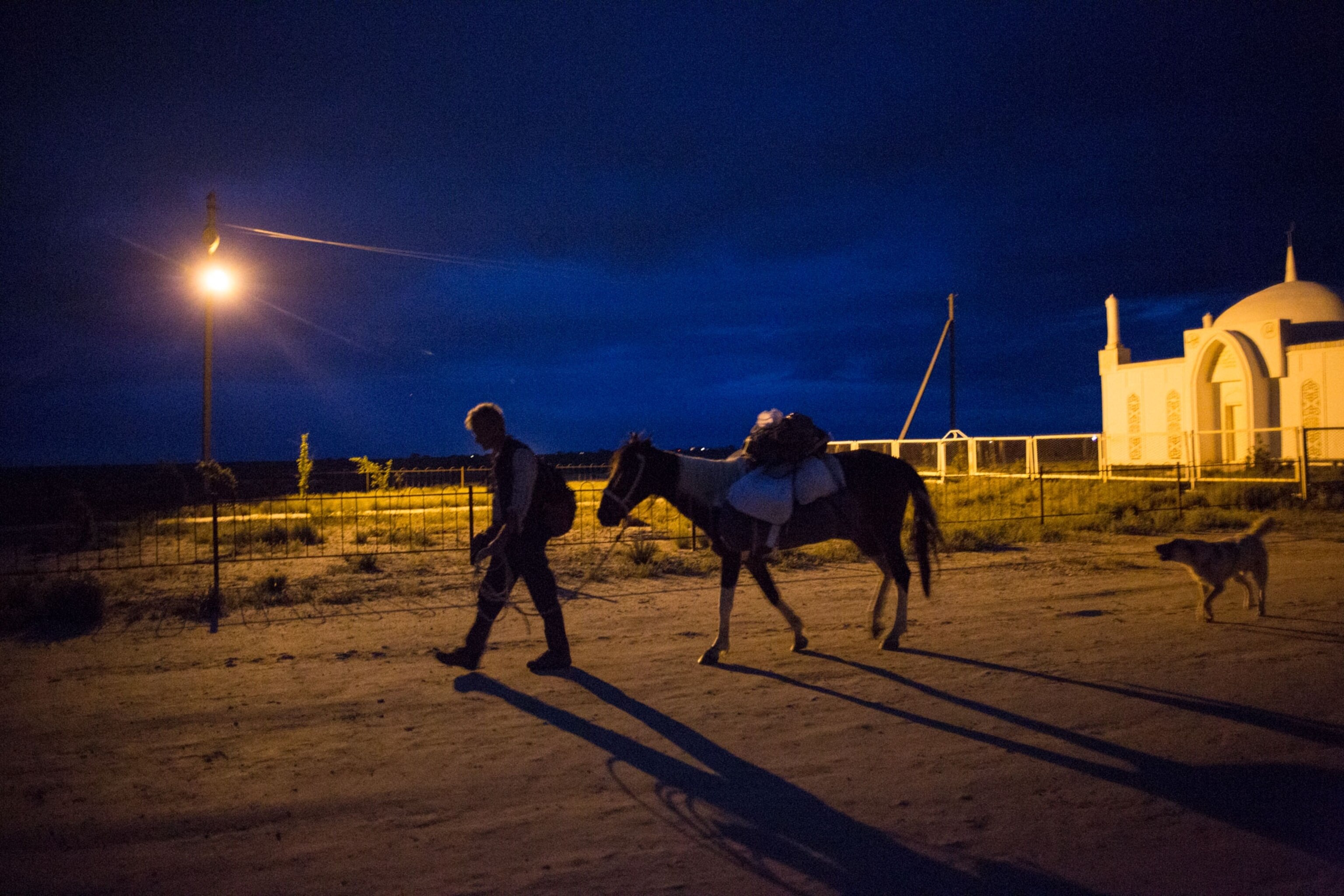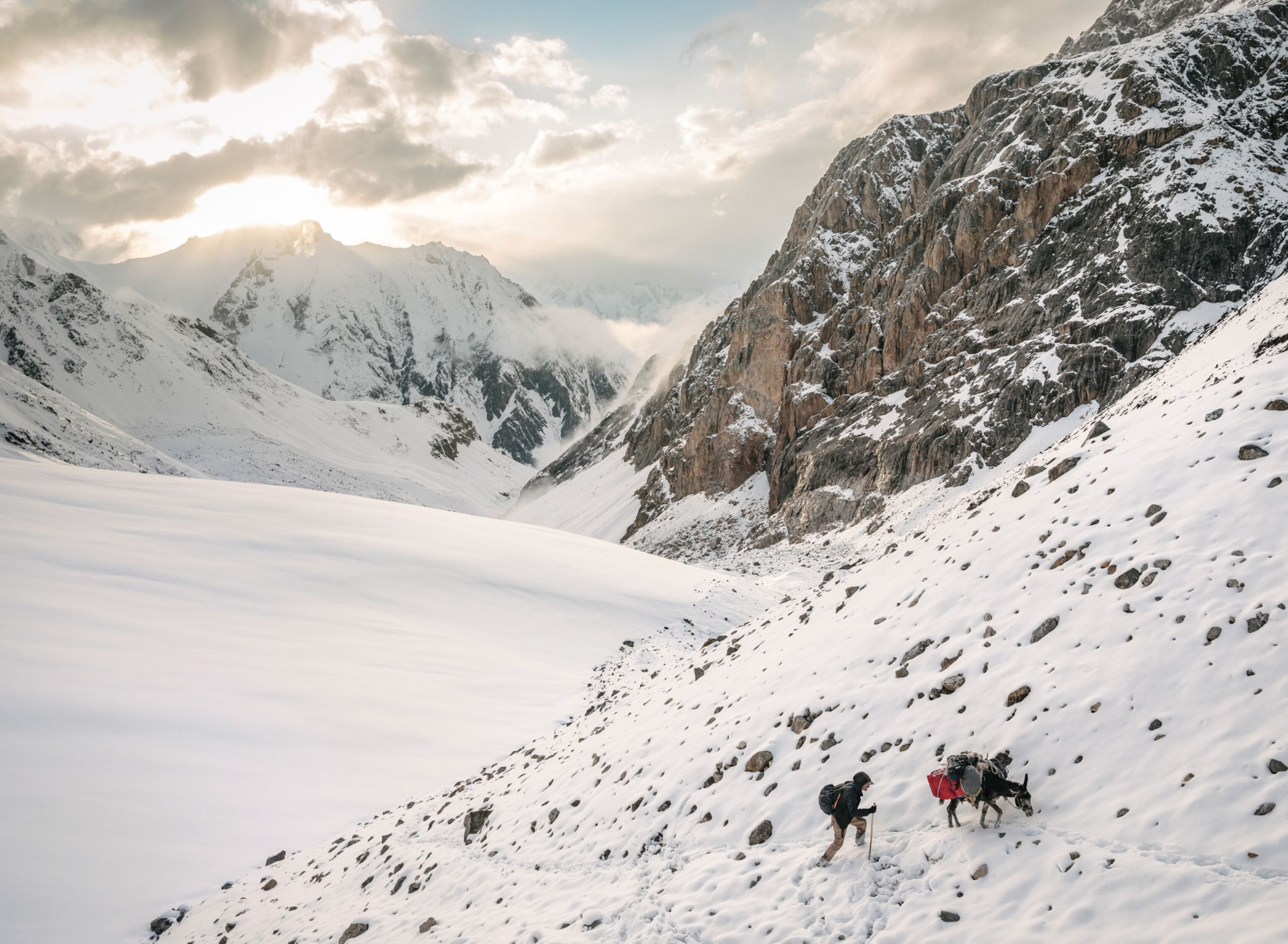On a global walk, mass migrations and China's rise are seen at boot level
Inching into the seventh year of a transcontinental trek, a writer senses a changing planet.
Exactly six years ago, I ducked out of a tent in the Rift Valley of Ethiopia, clipped a pedometer to my belt, clapped on a cowboy hat, and began hiking to the Middle East on the Out of Eden Walk: a global ramble along the pathways of the first Homo sapiens who dispersed out of Africa in the Stone Age.
By that date—the desert dawn of January 10, 2013—60,000 people already had died in the distant war in Syria. That toll now exceeds 400,000. Barack Obama was soon going to be sworn in for a second term as U.S. president. And in Ethiopia, cell phone usage was exploding at the rate of 400 percent a year, though coverage hadn’t yet reached my desolate camp. I was using a satellite phone. Its sudden ringing that silent morning startled me. It was an American radio host.
“Are you still carrying”—he wanted to know, by way of a goodbye interview—“your New Mexico house keys?”
Ancient migrations have guided my walk’s route and storytelling across the world from Africa to my finish line, the tip of South America. So it’s natural that some readers—the calling journalist included—tend to see my project as an antique and maybe ethereal endeavor, a monkish pilgrimage, a “journey out of time.” But it’s been just the opposite.
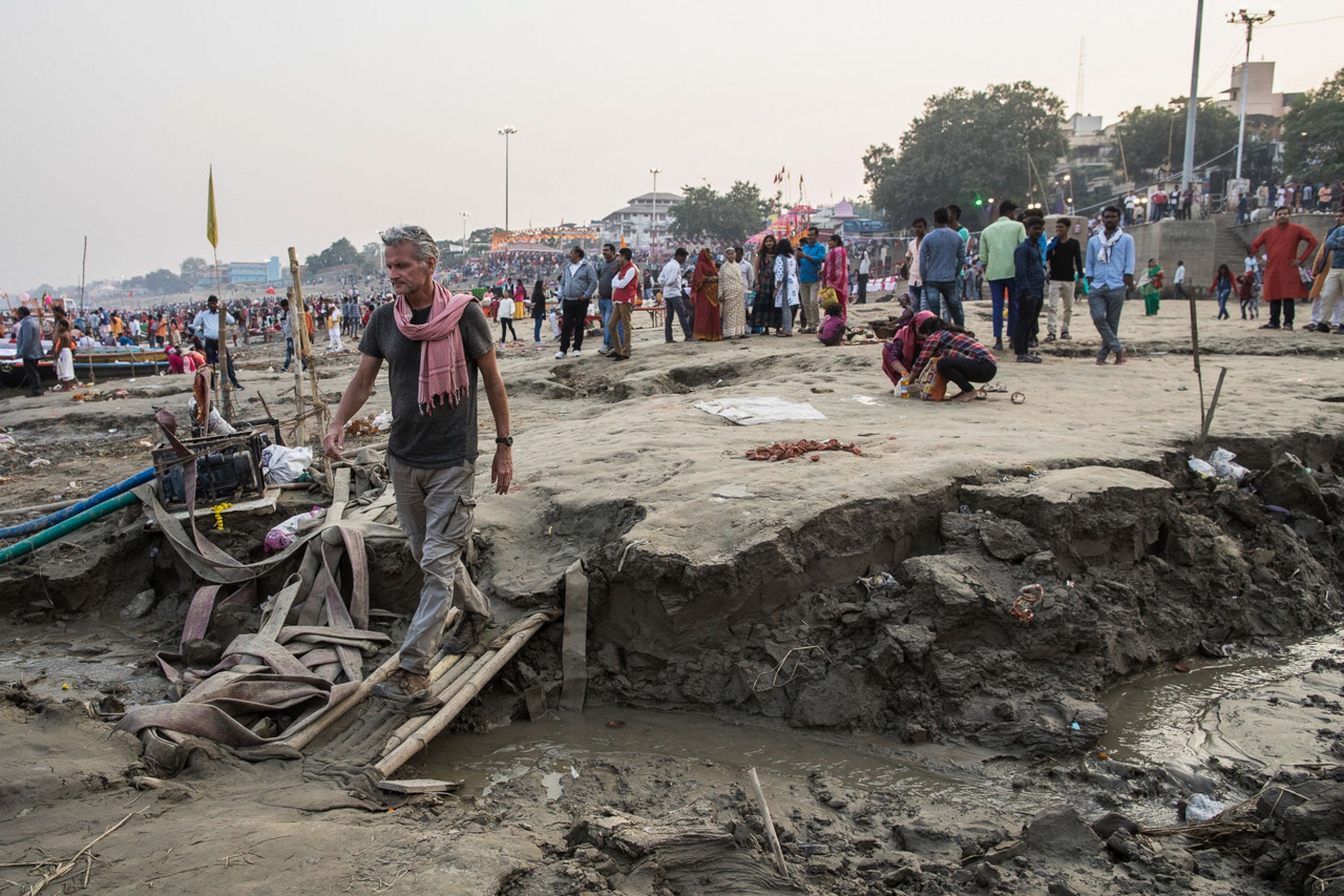
During the past six years, after planting nearly 16 million footsteps between my starting point at a human fossil site in the wilderness in the Horn of Africa and my current location on the cultivated plains of northern India, my days have been extraordinarily busy: crammed with incident and talkative people, immersed in modern problems and current events. In this way, the Out of Eden Walk has been more like a trek into a common future: After all, we’re walking together into the shared bottlenecks of the 21st century.
Six years into my trek, two broad impressions have emerged, at boot level, of this vast world.
First: We’re living in a golden age of human migration.
Even at the utterest ends of the Earth, I’ve found myself walking among striving people on the move. In the remote Afar Desert of Ethiopia, I stumbled across the bodies of African migrants who had died of thirst on the unforgiving desert trails to finds jobs on the Arabian peninsula. I slept in sandy Jordanian fields among Syrian war refugees. A couple of days ago, alongside a village road in India, a teenage girl strode up and boldly shook my hand.
“This place is very, very boring,” she told me within a minute. “My teachers are boring. What do I do?”
There was no need to reply. Her answer was already there, the ambition and hope shining in her intelligent eyes. Soon enough, she would elbow her way into one of India’s colossal megacities, testing her mettle against hundreds of millions of other villagers clawing their way into an urbanized global economy. The UN estimates that more than a billion people—one in seven humans today—are voting like this with their feet, migrating both internally and across borders. Such numbers may alarm the more settled, richer corners of the globe. But history teaches that the forces behind human exodus are rarely contained by walls. I sit dusty and sweating under a ficus tree, one walker among many, watching busloads of India’s hardworking poor come and go ceaselessly. Sooner than later, the world must learn to harness the extraordinary energy behind mass aspiration.
The second change I sense underfoot.
It is like a tectonic shift—a new geological weight over the horizon that tilts the surface of the planet east. For the past three years, I have walked the old Silk Road from Turkey to India. Along the way, especially in Central Asia, I have seen societies transformed by Chinese economic power: new highways, pipelines, communications grids, railroads. Part of this is the trillion-dollar Belt and Road Initiative, the most costly infrastructure project in the world today.
Whether the century will be Chinese is still unknowable. But it is clear from hundreds of trailside conversations in shops and farms, in schools and offices that we collectively walked across a new Asian threshold some time ago. All roads may yet lead to Rome. But there are new Romes now. And the old ones have lost something of their glow. I look forward to exploring these questions on foot as I head east, toward Myanmar, toward Yunnan.
Whatever the case, there is no need for fear. The key is to stop and talk, and then to keep moving. To cross the next river. To look around the next mountain. Humankind’s ancestors did this, and they gave us the world.
As for me, I sent my American house keys back years ago, while traversing Cyprus. I no longer own a house. I have a map. Home is on it everywhere. And it will do.
